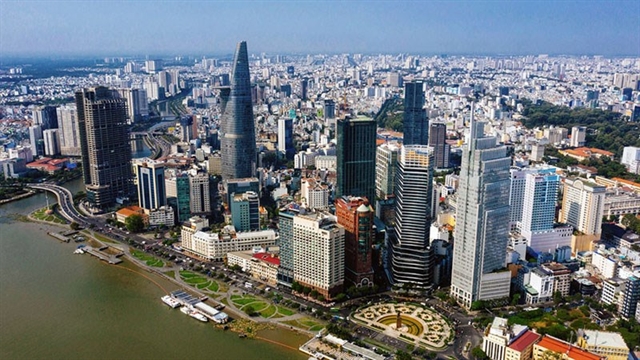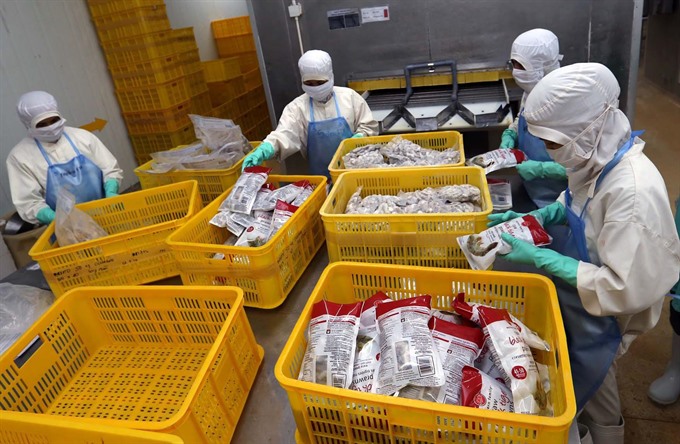 Economy
Economy

The country’s shrimp export business could be in for a tough year, due to sharp rise in global surplus supply and a drop in market price.
 |
| Frozen shrimp being prepared for export at the Cửu Long Sea Products Company in the southern province of Trà Vinh. — VNA/VNS Photo Vũ Sinh |
HÀ NỘI — The country’s shrimp export business could be in for a tough year, due to sharp rise in global supply and a drop in market price.
According to Trương Đình Hòe, General Secretary of the Vietnam Association of Seafood Exporters and Producers (VASEP), despite growing concerns regarding misuse of antibiotics, lack of traceable origin and reported cases of infection, domestic shrimp producers are doing well.
The association’s forecast for 2018 states that shrimp exports will increase by about 10 per cent from 2017, reaching US$4.2 billion in revenue by the end of the year.
But Hòe warned that due to increasing international supply and stored surplus, the global price for shrimp may not meet producers’ expectations in 2018.
He said shrimp farmers from Việt
Hồ Quốc Lực, general director of Sao Ta Food Joint Stock Company, said that so far this year suppliers have seen a 5 per cent reduction in the market price of shrimp compared to last year due to growing supply.
He said that the Vietnamese shrimp industry is also facing other challenges, especially in the
In early March 2018, the United States Department of Commerce (DOC) announced the preliminary results of anti-dumping duties on Vietnamese shrimp, which measured up to 25.39 per cent, which is considered too high compared to previous disclosures.
Lực said that there was a degree of confusion between whole shrimps to unshelled shrimps, which resulted in significant bias, without which the correct tax margin would be 1.19 per cent.
According to VASEP, another obstacle for Việt
This means from now on shrimp products imported into the
Hòe advised local firms that from now until the SIMP is applied, they should move quickly to ensure stable quality and focus on products traceability to maintain export turnover.
Reports from VASEP showed shrimp exports have earned the country $719 million in first quarter of 2018, a 16 per cent year on year increase, mostly due to favourable weather conditions and high yield.
Coupled with high market demand, shrimp farmers have since experienced higher export value.
The Vietnam Directorate of Fisheries’ (VDF) 2017 statistics said the total production of shrimp weighed in at 704,868 tonnes, of which export turnover reached over $3.85 billion, up by 22.3 per cent from 2016’s end.
Nonetheless, the VDF’s report stated that the country’s shrimp industry has yet to become fully sustainable. Remaining problems include shortages in breeding technology, high costs of production, and chemical abuse, as well as product impurities and small production scale.
Currently, Vietnamese shrimp exports to the European market are gaining the upper hand, as its main competitor of Indian shrimp is loosing favour due to overuse of antibiotics and subsequent threats of an import ban.
Among Việt
The country’s shrimp export turnover to